 Weird Stuff
Weird Stuff  Weird Stuff
Weird Stuff  Our World
Our World 10 Ways Your Christmas Tree Is More Lit Than You Think
 Movies and TV
Movies and TV The 10 Coolest Stars to Set Sail on The Love Boat
 History
History 10 Things You Didn’t Know About the American National Anthem
 Technology
Technology Top 10 Everyday Tech Buzzwords That Hide a Darker Past
 Humans
Humans 10 Everyday Human Behaviors That Are Actually Survival Instincts
 Animals
Animals 10 Animals That Humiliated and Harmed Historical Leaders
 History
History 10 Most Influential Protests in Modern History
 Creepy
Creepy 10 More Representations of Death from Myth, Legend, and Folktale
 Technology
Technology 10 Scientific Breakthroughs of 2025 That’ll Change Everything
 Weird Stuff
Weird Stuff Ten Bizarre Facts About The Doge Meme
 Our World
Our World 10 Ways Your Christmas Tree Is More Lit Than You Think
 Movies and TV
Movies and TV The 10 Coolest Stars to Set Sail on The Love Boat
Who's Behind Listverse?

Jamie Frater
Head Editor
Jamie founded Listverse due to an insatiable desire to share fascinating, obscure, and bizarre facts. He has been a guest speaker on numerous national radio and television stations and is a five time published author.
More About Us History
History 10 Things You Didn’t Know About the American National Anthem
 Technology
Technology Top 10 Everyday Tech Buzzwords That Hide a Darker Past
 Humans
Humans 10 Everyday Human Behaviors That Are Actually Survival Instincts
 Animals
Animals 10 Animals That Humiliated and Harmed Historical Leaders
 History
History 10 Most Influential Protests in Modern History
 Creepy
Creepy 10 More Representations of Death from Myth, Legend, and Folktale
 Technology
Technology 10 Scientific Breakthroughs of 2025 That’ll Change Everything
10 Spiritual Or Scientific Attempts At Raising The Dead
What comes after death is a question that has haunted mankind for generations. Everyone seems to have their own belief with answers that range from absolutely nothing to everything we could possibly dream of. And for just as long, we have tried to cheat death. Listen to the tales some people tell, and you would think they succeeded.
10Alexsei Kuliabko
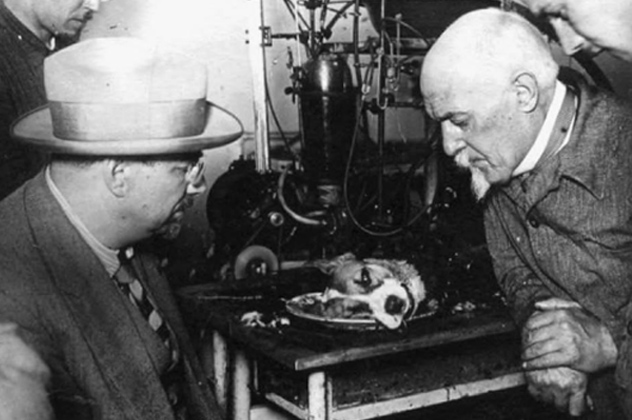
Aleksei Kuliabko was a Russian scientist working for the Physiological Laboratory of the Imperial Academy of Sciences in St. Petersburg at the turn of the 20th century. By 1902, he had already figured out how to restart the hearts of animals that had been removed up to five days. In 1903, he had moved on to restarting human hearts. Kuliabko’s first subject was a three-month-old baby who had died of natural causes. Two days after the infant’s death, he got the heart to beat again.
It is a pretty big leap to resurrecting a complete human, but Kuliabko was nothing if not ambitious. Reports of the Russian’s success and their resurrection attempts made world news. Editorials not only lauded their accomplishments to date, but also reassured the public that it was only a matter of time before the trials were successful on a human head, and finally on an entire human. The line between science fiction and science fact was becoming blurred. Kuliabko became the face of scientific advancement, and was often featured in staged promotional pictures with some pretty horrible centerpieces.
According to the stories, Kuliabko actually did try to reanimate an entire human body. Using the corpse of a man who had been dead for a day (he had died during surgery), and with help from a pharmacist and chemist named Fyodor Andreyev, the Russian scientist filled the dead man’s veins and blood vessels with a mixture of calcium chloride, potassium chloride, sodium chloride, sodium bicarbonate and dextrose (the invention of a British scientist who used it to keep hearts pumping) and adrenaline. The man’s heart started beating again and, still lying on the table, he was reported to have wheezed out a death rattle that sent assistants running from the room. After keeping the heart beating for 20 minutes, Kuliabko pulled the plug.
9John Lacy
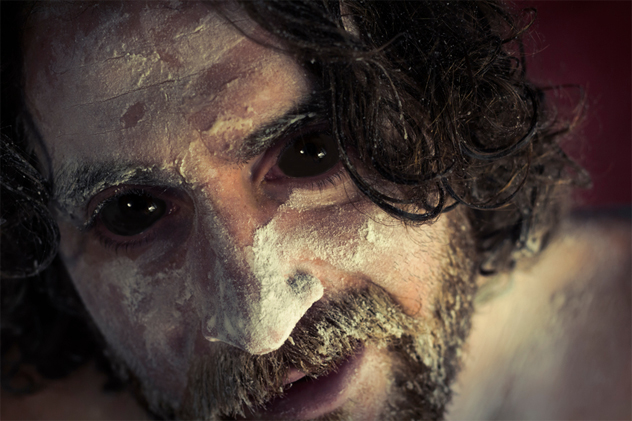
John Lacy was an English justice-of-the-peace who got wrapped up in the 18th century French Prophets movement, and was prophesied to be the vehicle for the resurrection of Thomas Emes.
The French Prophets derided a whole host of Anglican beliefs such as taking issue with the fact that black was the Devil’s color, yet all the priests wore black themselves. Upper-crust citizens like Lacy helped give the Prophets leverage as they moved into London, but they shocked more people than they won over.
Lacy was only one of the movement’s members that claimed he was occasionally possessed by the spirit of the divine. He claimed to perform automatic writings while under the control of the Holy Spirit, a possession that he never remembered after it happened, and he also delivered his prophecies in Latin, Greek and French. While he claimed he was essentially speaking in tongues, others pointed out that not only was he a French translator, but that he had also had schooling in Greek and Latin—and he was horrible at speaking it.
From there, it was only a short leap to performing miracles of healing and in 1708 he was preparing to resurrect fellow believer Dr. Thomas Emes. Emes died on December 22, and on the next day, a 12-year-old prophetess predicted that he would rise again on May 25. In the months following the doctor’s burial in Bunhill Fields, the faithful wore green ribbons (to identify them as not being one of the wicked, should divine forces decide to go on a cleansing spree), and Lacy continued to heal. When the long-awaited day arrived, somewhere around 20,000 people showed up to watch the miracle take place.
Needless to say, there was no miracle and the good doctor did not rise from the dead. Lacy’s failure turned belief into ridicule, even though he had written a letter expressing doubt over whether or not it was actually going to even happen.
8Lorenzo Snow
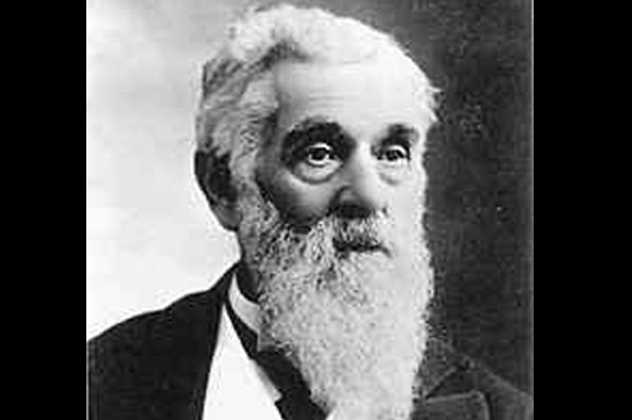
In 1889, Mormon leader and Elder Lorenzo Snow was installed as the President of the Quorum of the Twelve Apostles, and it was a turbulent time in Mormon history. He had just been released from prison not long before, sentenced on the charge of breaking laws that made polygamy illegal. In his new role, Snow was at the head of the church, and in 1891, he performed what was likely one of his most incredible miracles.
Ella Jensen, his niece, died at 10 a.m. on March 9, while Snow was in a the middle of a speech. The story goes that when he found out that his niece had died, he immediately went to her home and stood at her side. After requesting some consecrated oil, he anointed her and was reported to have said, “Dear Ella, I command you, in the name of the Lord, Jesus Christ, to come back and live, your mission is not yet ended. You shall yet live to perform a great mission.” Snow told her parents not to worry, and left. An hour later, she sat up and asked for Snow, who she claimed had called her back.
7Lazzaro Spallanzani And Anton Van Leeuwenhoek
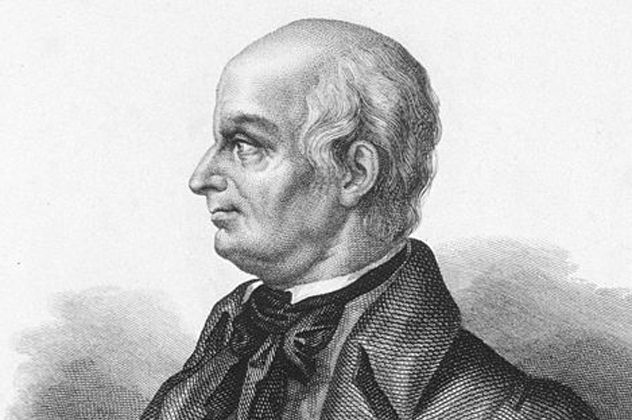
An Italian scientist from the 18th century, Lazzaro Spallanzani is perhaps best known for his work with the spontaneous generation theory. He was also fascinated by the idea that some animals, such as worms, frogs and salamanders, could regenerate body parts. He also successfully raised tiny creatures from the dead.
From sediment in a rain gutter to under his microscope, Spallanzani named his tiny creatures il Tardigrado, meaning “slow-stepper,” and he found that adding water back into their environment brought them back to life.
Years earlier, in 1702, Dutch scientist Anton van Leeuwenhoek discovered the same thing with other tiny creatures. What we now know as rotifers, Leeuwenhoek found that although they were completely lifeless when they were dry, adding water to them brought them back to life. That might be impressive, but rotifers can only be dry for a relatively short amount of time.
Research on Tardigardes in the 1940’s claimed that dried specimens could be brought back to life after as long as 120 years. While that has yet to be successfully proven, we do know that we can reanimate ones that have been dried out for as long as eight years. Scientists are not entirely sure how they manage to do it, but they have found that the creatures are only mostly dead. Deprived of water, they retract their heads and legs, slowing their life processes to around .01 percent of the normal function. It is also thought that they produce some sort of protective chemical when they begin to enter a dried state, but just how they cheat death is still unknown.
6Elijah Pierson
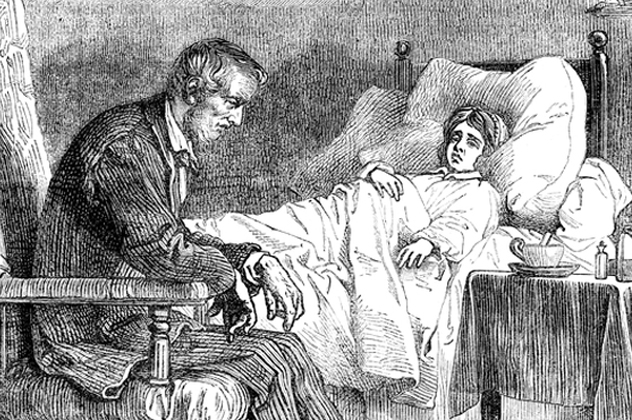
During the first decades of the 19th century, religious movements were popping up everywhere in the United States. Like others, Elijah Pierson and his wife, Sarah, were followers of a group that believed in some extreme things. Their beliefs lead to fasting to emaciation and visions, constant prayer, a plain lifestyle and a dislike of the poor. Shortly after they established a home to help women of ill repute find their faith, Sarah Pierson contracted tuberculosis.
Elijah was convinced it was all a test of his faith and, in his journals, wrote about a vision in which God said she would recover. God also instructed him to begin using the name Elijah the Tishbite as he was to be God’s next great prophet. Soon after, Elijah gathered his followers around Sarah’s sickbed to anoint her and pray. After her death, he took it as a sign that he was supposed to resurrect her.
Once again, Elijah gathered his followers and believers and performed a series of prayers and rituals over her coffin at the funeral. Among the witnesses was her father, John Stanford, a minister who wrote that the entire thing made him “ill and depressed in mind.” Needless to say, Sarah did not return from the dead.
However, the story did not end there as one of Pierson’s followers convinced him that she would return in the spirit of another. The follower even knew who the vessel for Sarah’s spirit would be—Frances Folger, a woman she predicted would ultimately have his child.
After Sarah’s death, Pierson sank deep into despair, no doubt made worse by the bizarre developments that swirled around him. After being poisoned under mysterious circumstances, Pierson followed Sarah to the grave on July 28, 1834. Former housekeeper of the Pierson family, Isabella Van Wagenen, was the only suspect. Van Wagenen, better known today as Sojourner Truth, filed a libel suit against Folger because of the claims and ultimately won.
5The Society For The Recovery Of Persons Apparently Drowned
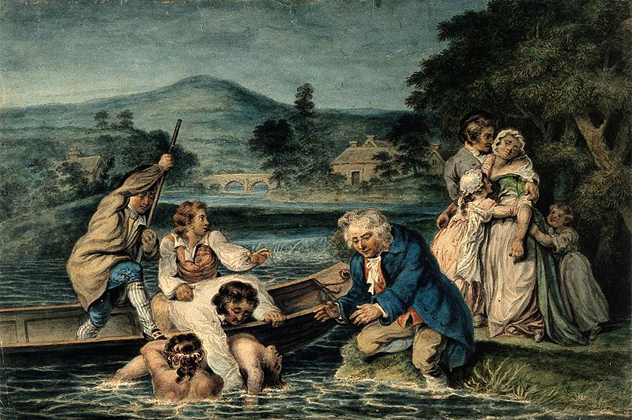
Founded in 1774 by William Hawes and Thomas Cogan, the Society for the Recovery of Persons Apparently Drowned is still around today as the Royal Humane Society. Cogan was the first to translate a Dutch paper written on the effectiveness of resuscitating drowning victims by forcing air into their lungs. With dozens of people dying every year from falling in the Thames, Cogan approached Hawes with an idea. They were going to create a society to promote this new information on how to bring dead drowning victims back to life, but they were ridiculed for it.
The ridicule was short-lived, and King George III put his support behind the young society in 1783. In addition to information, they also established a network of doctors and surgeons who worked out of homes and pubs along the Thames. They provided resuscitation equipment, and they even offered a reward to both people performing the life-restoring maneuvers, and to pub owners for the use of their building.
The reward system encouraging people to save lives soon backfired. Teams would work the system, with one person pretending to be a drowning victim and the other pretending to miraculously resurrect him. The scam was so widespread that it was not long before they started handing out certificates instead of cash.
4Sergei Bryukhonenko
In 1925, Sergei Bryukhonenko first demonstrated his “autojektor” to the Second Congress of Russian Pathologists. The machine circulated blood through a body and into a glass container, where it would be artificially re-oxygenated and pumped back into whatever creature the Russian scientist was experimenting on. In front of the Congress, he kept a dog’s head alive for 100 minutes, but no one was really impressed.
It was not until a year and a half later that the media got wind of the story, and propelled Bryukhonenko to fame. The public was outraged, but not because of the horrible experiments he was performing. They were mad because of the complete lack of governmental funding and support he was receiving. The outrage led to a major grant from the People’s Commissariat for the Protection of Health and word continued to spread about what the Russians were up to. Even George Bernard Shaw went on record with a joke saying if it was all true, then he would consider having his own head removed and kept alive so he could concentrate on dictating his next work without all the hassle of everyday life.
Stories claim that Bryukhonenko moved on with attempts to get the autojektor to work on a human. Bryukhonenko got his body after a man had committed suicide. The man was dead for three hours before his body was hooked up to the autojektor. It supposedly took another few hours for the new machine to work the dark magic they were waiting for. His heart started beating, noises came from his throat, and he even opened his eyes to stare at the doctors. Just like Kuliabko’s team, the scientists were so horrified by their success that they turned the machine off after only two minutes.
3The Dead Raising Team
Led by Tyler Johnson, the Dead Raising Team is a group of Christian healers who base their work on Matthew 10:8—“Heal the sick, raise the dead, cleanse those who have leprosy, drive out demons.” Jesus was talking to the Apostles, but the group claims that he was really talking to everyone. As of 2014, the team claimed to have helped 11 people come back to life with the power of faith and prayer.
Johnson claimed he is so well-known that he is often allowed through police barricades in order to pray for accident victims. He also refuses to give out the names and stories of those people that he has brought back. He will, however, teach anyone who is interested in the gift at their School of Resurrection.
However, the Dead Raising Team isn’t the only modern group that claims to be able to bring back the dead with prayer. A group called Global Awakening is looking for more bodies to practice their art of resurrection on. One oft-cited case is that of an American heart surgeon who claimed to bring a patient back from the dead by praying over him . . . with the help of a defibrillator at the same time.
2Smith Wigglesworth
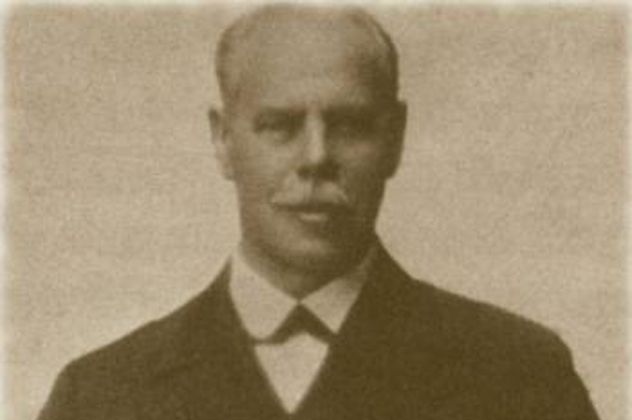
In 1907, Smith Wigglesworth was transformed from a shy speaker to a powerful Pentecostal force. At the time, he was studying to be a plumber until he felt himself being swept away on a tide of belief and faith. Gradually, he began to focus on the idea that illness was a physical battle between God and the Devil that raged within a person. He believed that faith was the only thing that was truly needed for a person to overcome anything that ailed them.
Wigglesworth would go on to tour Europe and the United States, drawing crowds around tens of thousands, even as the Swedish government forbid him to practice his laying on hands. In spite of his popularity and professed success, both his wife and daughter died young. He believed that his failure to heal them was because he was not yet strong enough.
According to the stories told about Wigglesworth, he didn’t just heal people, he raised them from the dead. Believers claimed that there were at least 14 people brought back to life by the preacher, including one man who was laying in his coffin in the funeral home. Wigglesworth picked the man up, propped him against the wall, and told him to live again. Although the first time failed, it was the third attempt when the man supposedly coughed, stood up, and left the funeral home under his own living, breathing power. Another story claimed that he brought his own good friend back from death. When he heard his long-time friend was sick, he went to visit the man only to find his friend’s wife already grieving. He went upstairs and appealed to God, and it was reported that the man not only rose from the dead, but also lived a long life. Wigglesworth embarked on his first ministry to the United States in 1914.
1John Dee And Edward Kelley
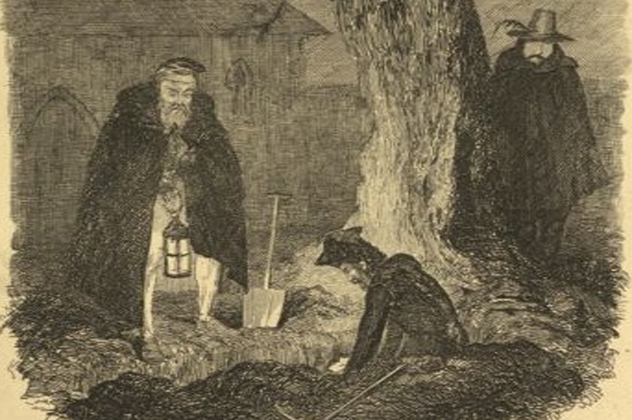
The stories about John Dee, astronomer and adviser to Queen Elizabeth I, and Edward Kelley exist in that strange realm somewhere between history and legend. According to the Lancashire legend, Dee and Kelley were summoned to St. Leonard’s Churchyard one night toward the end of the 16th century. One of the community’s richest men had recently died, and he took the location of his wealth to the grave with him.
Dee and Kelley dug up the grave, and according to the story, it was Kelley who performed the ritual over the body. Even though the corpse had already begun to decay, it was said that the dead man’s eyes opened and he revealed the secret of his fortune’s whereabouts. He also imparted some otherworldly knowledge, supposedly telling the two men what was going to happen to some of the local people. The dead man was right.
Oddly enough, a few hundred years later, archaeologists found an actual buried treasure. The church where Dee and Kelley were said to have held their nighttime resurrection is not far from Preston, where a massive treasure was uncovered in 1840. What would become known as the Cuerdale Hoard was made of around 8,600 silver coins and other items, making it the largest Viking-era silver cache ever uncovered. The coins were turned over to the British Museum (with each member of the excavation team allowed to keep one coin each), and it was later estimated that the hoard was buried between 905 and 910, likely by Vikings that had only a short time before been driven out of Ireland.








